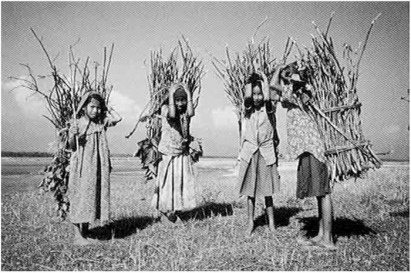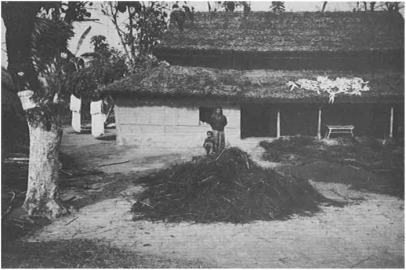Result and Conclusion
There are total 31 households are moving outside out of total 100. Almost 31 percent household moved away, which is comparatively very high. Owning of cultivable land accounts for a significant indicators which effect migration decision. Those who are not migrated, 82% of them have electricity in their house and those who are migrated only 40% of them has electricity. So having electricity in the household also effect migration decision. Those who are not migrated 65% of household have more than 3 katha of land (within 3-20 katha land), 72% have 8-40 number of domestic animal, 65% people have less than 5 class complete and at the same time those who are migrated from another place, almost 93% has 0-1 katha of land, 58% have 0-2 number of domestic animal,87% people have more than class 5 complete, and 32% household has some cultivable product damage. Which means, if total bari and khet land increase or number of total domestic animal increase or number of family size increase, or more electricity in the hh level or less education level or less non family work involvement or more size of owned home land, owned tube well or no cultivable product damage then it will negatively effect by the migration decision (dependent variable).
The aim of this survey research is empirically examining the relative scarcity of assets in the household level relation of migration decision using previously collected household level data from the Chitwan Valley of Nepal by Population and Ecology Research Laboratory (PERL) social science research and training venture. Here in my research elaborating part, I tested the hypothesis that relatively deprived households in terms of lack of cultivable land and scarcity of domestic animal, involving non-farm activities, any product damage, higher education level, do not have own tube well in the household level are more likely to send away their household member for earning to another place or urban areas than those who are from relatively less deprived households ie. non-poor households.
Continuation of acute poverty results both the country and individuals facing lack of resources to initiate environmentally sustainable practices and socio economic development. This severe poverty causes the problems of hunger and malnutrition and lack of access to the most basic ingredients of a decent life and requirement of prime needs of the daily life. They will put in a vicious circle of poverty in which the immediate economic imperatives of survival force them to undermine and destroy the ecological and natural resource systems on which their future depends by soil degradation, emission quality of the environment, quality of air, water. In a situation of population growth in rural areas, lack of financial and technological capacity and political actions, it will be increasingly difficult to break this vicious circle.
In this research paper, my findings provide indications that relatively deprived households require attention in order to regulate or control migration and control the urbanization problem. It will help to arranging employment opportunities or alternative income-generating activities by other Non-Government Organizations in the community level might be an important policy for improving the economic status of such relatively ‘land and domestic animal’ deprived households as relatively deprived people are more likely to move to search for jobs.
Disclaimer: This is a class exercise based on modified or randomly generated data set.




